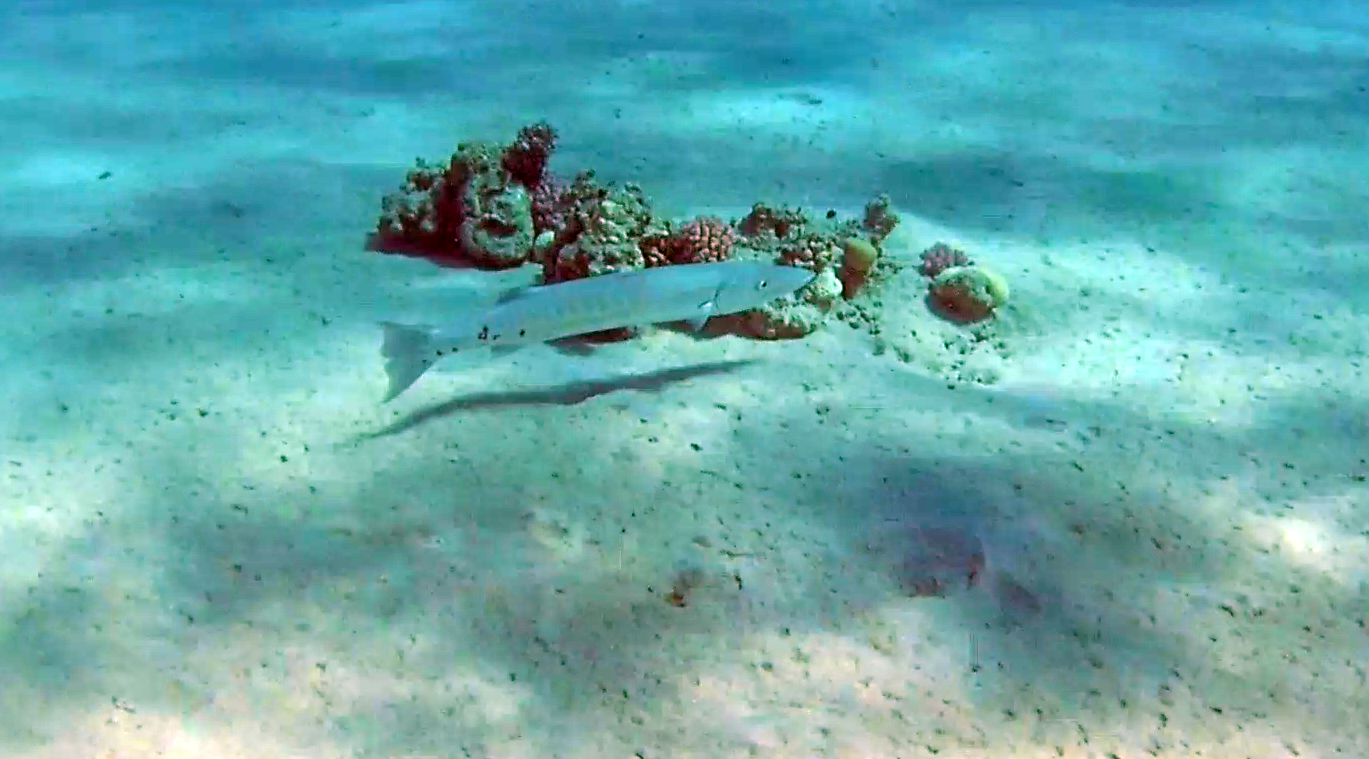Grande Barracuda - Sphyraena barracuda
The great barracuda (Sphyraena barracuda), also known as the giant barracuda, is a common species of barracuda: large, predatory ray-finned fish found in subtropical oceans around the world. Grande Barracuda Sphyraena barracuda Sphyraenidae intotheblue.it

Great barracudas are large fish. Mature specimens are usually around 60–100 cm (24–39 in) in length and weigh 2.5–9.0 kg (5.5–19.8 lb). Exceptionally large specimens can exceed 1.5 m (4.9 ft) and weigh over 23 kg (51 lb). The record-sized specimen caught on rod-and-reel weighed 46.72 kg (103.0 lb) and measured 1.7 m (5.6 ft), while an even longer example measured 2 m (6.6 ft) .
Behavior and Biology
Barracudas appear in open seas. They are voracious predators and hunt by ambush. They rely on surprise and short bursts of speed (up to 27 mph (43 km/h) to overrun their prey, sacrificing maneuverability. Barracudas are more or less solitary in their habits. Young and half-grown fish frequently congregate in shoals.
Barracudas can reach at least 14 years of age. The spawning season lasts from April to October. Females can release about 5,000 to 30, 000 eggs.The diets of these top predators of reefs are composed almost totally of fish, cephalopods, and occasionally shrimp. Large barracudas, when gorged, may attempt to herd a school of prey fish in shallow water where they guard over them until they are ready for another hunt.

Prey and predators
It feeds mainly on fish and squid. In its juvenile stages it is prey to Lampuga. Great Barracuda Sphyraena barracuda Sphyraenidae intotheblue.it
Hazard for humans
Attacks on humans are documented but are rare, usually done with a quick bite that causes serious damage, but is rarely fatal for the victim. It is thought that the attack is caused by the sparkling of metal objects (necklaces, bracelets, diving knives) that the barracudas would trade for blue fish.
https://it.wikipedia.org/wiki/Sphyraena_barracuda
https://en.wikipedia.org/wiki/Great_barracuda
